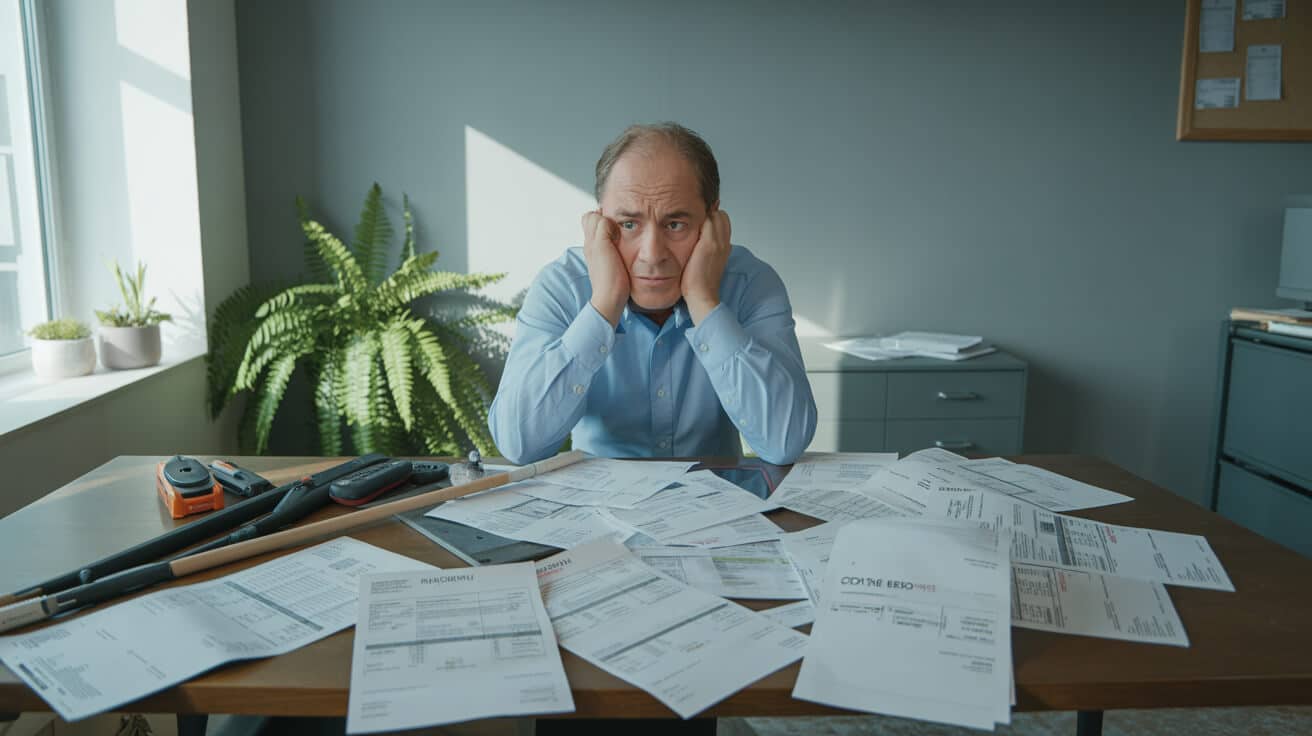 Essential Guide to Building Maintenance: Protect Your Property
Essential Guide to Building Maintenance: Protect Your Property
Ever found yourself staring down a leaky faucet, dreading the telltale signs of damp on your living room ceiling? Building maintenance – it’s the silent protector of our homes and workplaces, often overlooked until disaster strikes. But good building maintenance is about more than just fixing things after they break. It’s about safeguarding your property, maintaining its value, and avoiding costly emergency repairs.
A well-maintained building is a happy building. This means a comfortable and safe environment for your family or employees. Whether you own a commercial building in the city or a cozy cottage in the countryside, this guide will unpack the essentials of building maintenance and help you keep your property in tip-top shape.
Table of Contents:
- Understanding the True Value of Building Maintenance
- Crafting a Building Maintenance Plan That Works
- Finding the Right Building Maintenance Professionals
- Gas Safety & Electrical Systems: A Note on Compliance
- Understanding Different Types of Maintenance
- Benefits of a Robust Maintenance Strategy
- Conclusion
Understanding the True Value of Building Maintenance
Many people think of building maintenance as a reactive process. Something breaks, and you call someone to fix it. However, the real magic of building maintenance lies in being proactive.
A stitch in time saves nine. The same principle applies to your property. Regular inspections and maintenance tasks can prevent small issues from escalating into major (and expensive.) problems.
Why Proactive Building Maintenance is Key
Regular building maintenance offers many advantages. Here are a few that will make you want to schedule a property checkup today:
- Cost Savings: It’s no secret that prevention is cheaper than cure. A small leak caught early can be easily repaired. Let it fester? You might find yourself replacing entire pipe systems, costing much more in the long run.
- Increased Lifespan of your Building: Proper maintenance is like giving your property a fountain of youth. Taking care of your building’s essential systems – roofing, plumbing, electrical, and HVAC – ensures they function efficiently and last longer, saving you money and hassle.
- Enhanced Safety and Security: A well-maintained building is a safer building. Regular inspections can uncover potential hazards such as faulty wiring, gas leaks, or structural damage before they become serious risks. It also helps maintain fire safety systems and emergency exits.
- Improved Aesthetics: Let’s be real; a well-maintained building just looks better. Regular cleaning, painting, and landscaping can do wonders for your property’s curb appeal, whether it’s your home or a commercial space.
Crafting a Building Maintenance Plan That Works
No two buildings are the same, and a cookie-cutter approach to building maintenance just won’t cut it. The key is to create a tailored plan that considers your property’s unique features, age, location, and usage.
Key Elements of Your Plan:
- Regular Inspections: Just like you visit your doctor for regular checkups, schedule regular inspections for your building. This could be monthly, quarterly, or annually, depending on factors like the age of your building and the complexity of its systems. An effective property maintenance plan can be really useful to keep you on top of your game. During inspections, pay close attention to the following areas:
- Roof: Check for missing or damaged shingles, clogged gutters, and signs of leaks.
- Exterior: Inspect walls for cracks, paint deterioration, or signs of water damage. Ensure windows and doors are properly sealed.
- Plumbing: Look for dripping faucets, running toilets, low water pressure, and signs of leaks under sinks or around appliances.
- Electrical Systems: Inspect electrical panels for any signs of overheating, corrosion, or loose wiring. Test all outlets and light switches.
- HVAC: Schedule annual maintenance for your heating and cooling systems, including cleaning, filter replacement, and general inspection.
- Preventative Maintenance: This is where those regular inspections pay off. Use the insights gained to create a preventative maintenance schedule. This should cover routine tasks like cleaning gutters, servicing HVAC systems, flushing water heaters, and checking smoke detectors.
- reactive maintenance: Even with the most comprehensive plan, unexpected issues crop up. Reactive maintenance involves promptly addressing those unforeseen issues that weren’t on your radar.
Finding the Right Building Maintenance Professionals
Unless you’re a jack of all trades (and even if you are), it’s crucial to have reliable professionals you can call on for specialised tasks. From electricians to plumbers and HVAC technicians to roofers, having a trusted team ensures that work on your building is carried out safely and efficiently.
Tips for Finding Reputable Professionals
- Ask for Recommendations: Word-of-mouth is a powerful tool. Ask friends, neighbours, family, or colleagues if they have any recommendations for trustworthy tradespeople.
- Check Online Reviews: Online review platforms can be valuable resources. Websites like Trustpilot, Yelp, and Google My Business can give you insights into other customers’ experiences. Take reviews with a pinch of salt and remember a few negative reviews amongst a sea of positive ones are pretty normal.
- Verify Credentials: Always ensure your chosen contractor holds the necessary licenses and certifications for the work you are hiring them for. This is particularly crucial for tasks involving gas, electricity, or structural work. In London alone, various companies specialise in everything from plumbing repairs and building maintenance near me to complete renovations. Choosing local experts familiar with your area’s specific requirements and regulations is wise.
- Obtain Multiple Quotes: Never settle for the first quote you receive. Always get quotes from at least three different professionals to compare pricing, expertise, and proposed solutions. Be wary of extremely low quotes – remember quality work often comes at a fair price.
- Effective Communication is Key: Choose professionals who listen to your needs, communicate clearly, and involve you in the process. Good communication helps to establish a collaborative relationship based on trust.
Gas Safety & Electrical Systems: A Note on Compliance
Let’s face it; there are aspects of building maintenance you just can’t DIY. Gas and electrical systems, for instance, require the expertise of qualified professionals who comply with safety standards. Working with gas appliances demands expertise and adherence to safety protocols to prevent dangerous situations.
It is crucial to hire certified and reputable contractors who understand the regulations surrounding these critical aspects of your building.
Essential Tips for Safety and Compliance:
- Gas Safety Checks: Schedule annual gas safety checks with a Gas Safe registered engineer to ensure your gas appliances are in tip-top shape.
- Electrical Safety Inspections: Periodically inspect your electrical systems by a qualified electrician, particularly in older buildings or those that have undergone renovations.
- Stay Updated on Regulations: Building codes and regulations change. Ensure you are aware of the latest requirements regarding gas and electrical safety by referring to trusted sources like the Health and Safety Executive.
London is a melting pot of architectural styles, with older properties boasting unique features but often requiring specialised attention. For example, managing a Victorian townhouse will differ from caring for a modern apartment block. Regardless of the age or style of your building in London, finding qualified tradespeople familiar with local regulations is vital.
Understanding Different Types of Maintenance
You can categorise building maintenance into a few key types, each with unique characteristics and goals. Let’s delve deeper into the most common forms:
1. Reactive Maintenance
Reactive maintenance, as the name suggests, is all about responding to issues as they arise. It’s the classic “fix-it-when-it-breaks” approach. While reactive maintenance might seem cost-effective in the short term, it can lead to more significant problems and expenses down the line.
Imagine a small leak in your roof. Ignoring it might seem okay initially, but over time, that minor leak can escalate into a major issue, causing substantial water damage and requiring costly repairs. That’s why a proactive approach is generally more advisable.
2. Preventative Maintenance
Preventative maintenance is all about staying one step ahead. This approach focuses on regular inspections, routine servicing, and minor repairs to prevent major issues from occurring in the first place.
Think of preventative maintenance as going for regular car check-ups – changing the oil, replacing filters, and checking tire pressure. By addressing these small tasks routinely, you can avoid costly breakdowns and prolong the lifespan of your vehicle. Similarly, regular preventative maintenance for your building helps identify and address minor issues before they escalate into major problems.
3. Condition-Based Maintenance
Condition-based maintenance relies on real-time data and monitoring to make informed decisions about maintenance needs. This approach involves using sensors and other monitoring devices to track the condition of various building systems, such as HVAC, electrical, and plumbing.
Data from these sensors allows for predictive analysis, identifying potential issues before they cause noticeable problems. For example, sensors in your HVAC system can detect unusual vibrations or changes in performance, signalling the need for maintenance before a complete breakdown occurs.
4. Planned Maintenance
Planned maintenance involves scheduling and carrying out more extensive repairs or upgrades at specific times. This type of maintenance usually requires more significant planning and coordination and might involve temporarily shutting down parts of the building or systems.
Examples of planned maintenance tasks include replacing a roof nearing the end of its lifespan, upgrading electrical systems, or renovating common areas in a commercial building. These projects are typically scheduled during periods of low occupancy or when they will least disrupt daily operations.
Benefits of a Robust Maintenance Strategy
Investing in a robust and comprehensive building maintenance strategy offers numerous benefits. By proactively addressing maintenance needs, you not only extend the life of your property but also enjoy significant cost savings in the long run.
1. Minimising Repair Costs
Early detection and prevention are fundamental to minimising costly repairs. Addressing minor issues promptly can prevent them from snowballing into major headaches that drain your budget. Imagine ignoring a minor leak in a pipe – over time, it could lead to significant water damage, requiring extensive and expensive repairs.
2. Reduced Downtime and Disruptions
Unexpected breakdowns can bring your operations to a grinding halt. This downtime can result in lost productivity, missed deadlines, and frustrated occupants. Proactive maintenance helps avoid these disruptions by identifying and resolving potential problems before they cause significant issues.
3. Enhanced Safety
A well-maintained building is a safer building for everyone inside. Regular inspections and preventative maintenance ensure electrical systems are functioning correctly, fire safety measures are in place, and structural components are in good condition, reducing the risk of accidents.
4. Improved Energy Efficiency
Well-maintained building systems tend to operate more efficiently, reducing energy consumption and lowering utility bills. For example, regular servicing of HVAC systems ensures they run optimally, minimising energy waste. Additionally, sealing leaks in windows and doors can further improve energy efficiency.
5. Increased Property Value
A well-maintained property holds its value better over time. Potential buyers are likelier to pay a premium for a building with a solid maintenance history, as it signals that the property has been well-cared for and is less likely to require immediate repairs or upgrades.
6. Maintaining a Healthy Environment
Regular cleaning and maintenance of HVAC systems, plumbing fixtures, and other building components contribute to a healthier indoor environment for occupants. For example, a well-maintained HVAC system ensures proper ventilation, reducing the risk of mould growth and improving indoor air quality.
Conclusion
Whether you’re a homeowner in London or managing a commercial property, embracing a proactive approach to building maintenance is an investment in your peace of mind. It’s about being attentive to your property’s needs and catching those minor issues before they escalate into major headaches and costly repairs.



